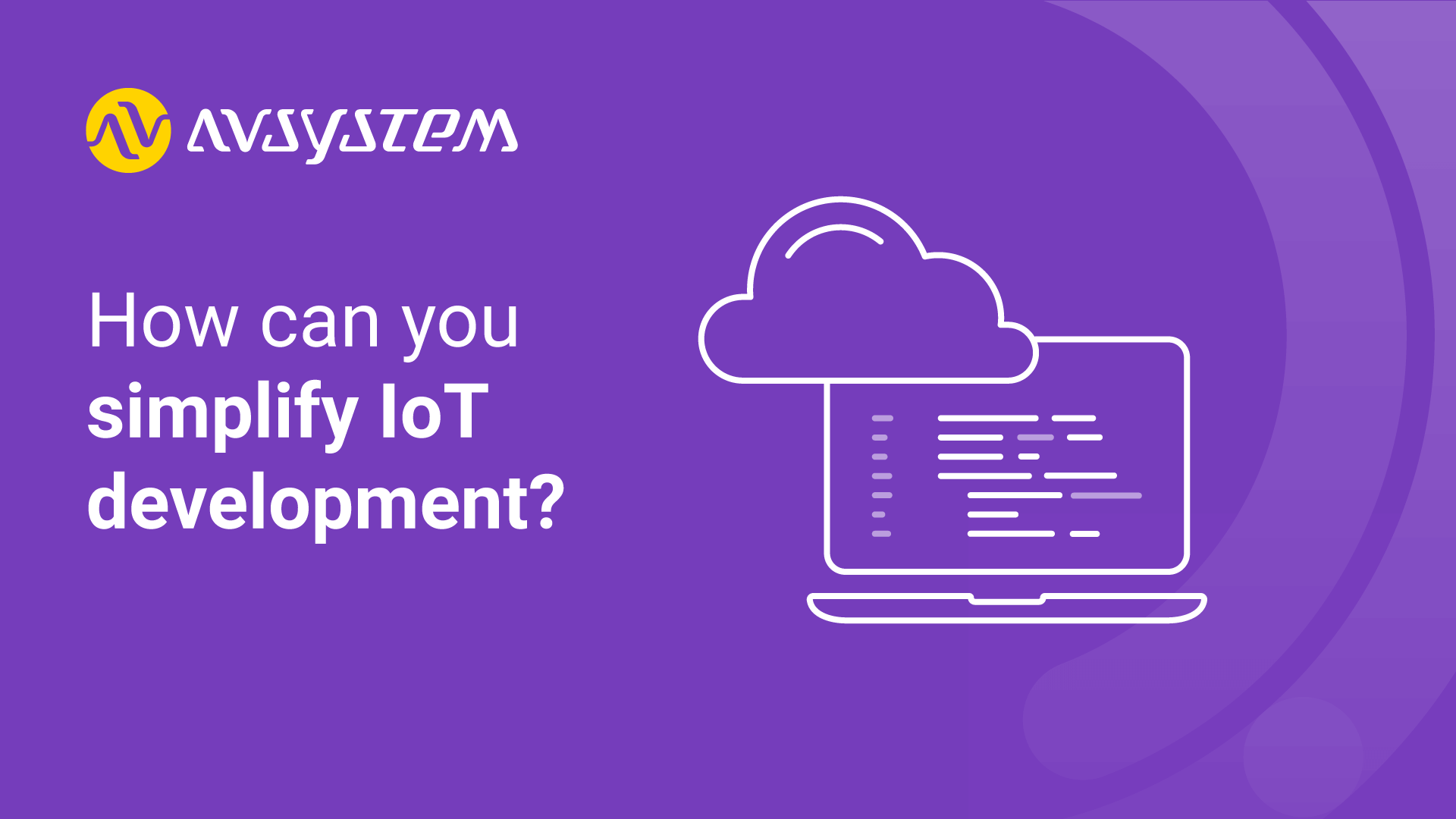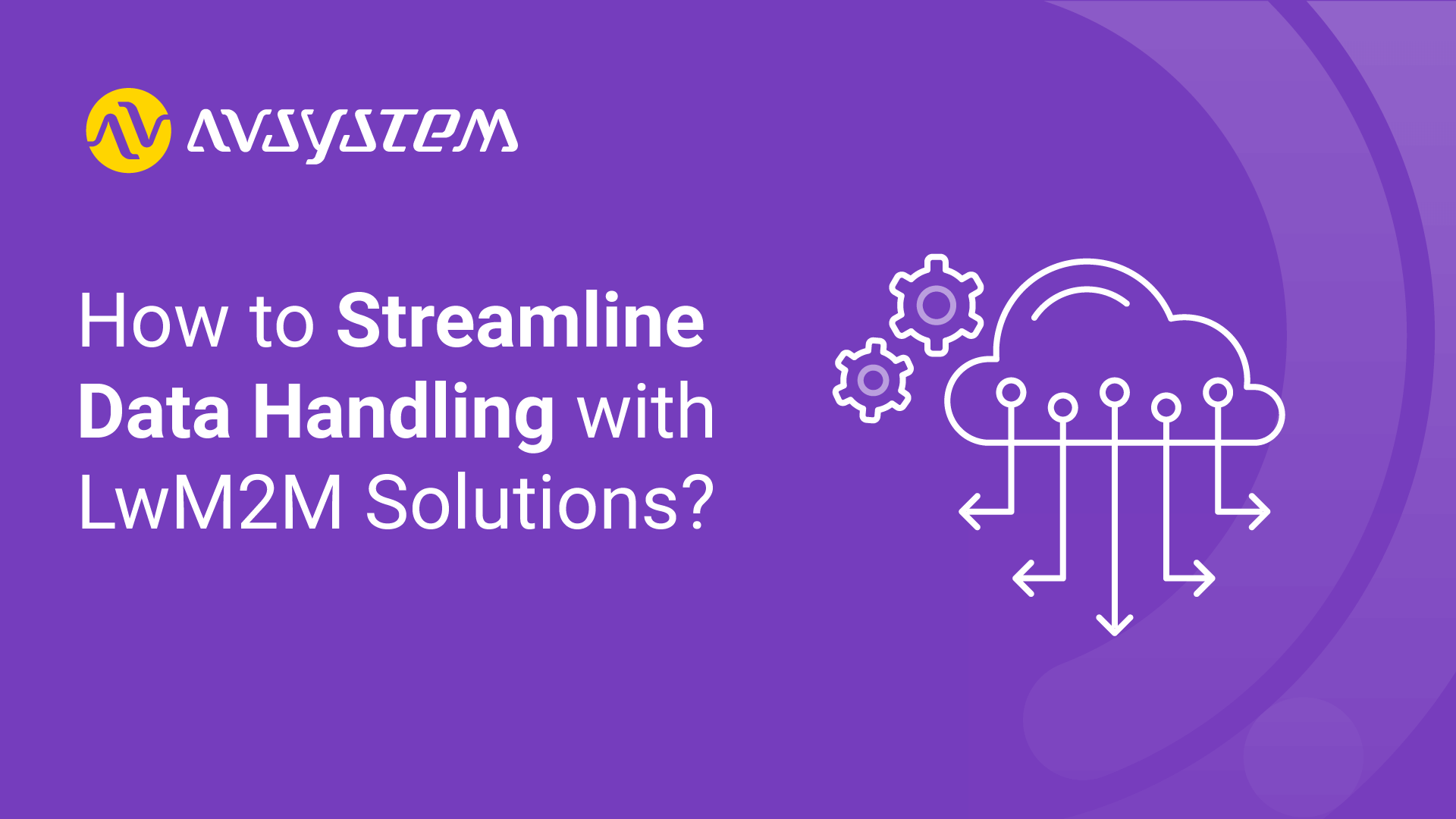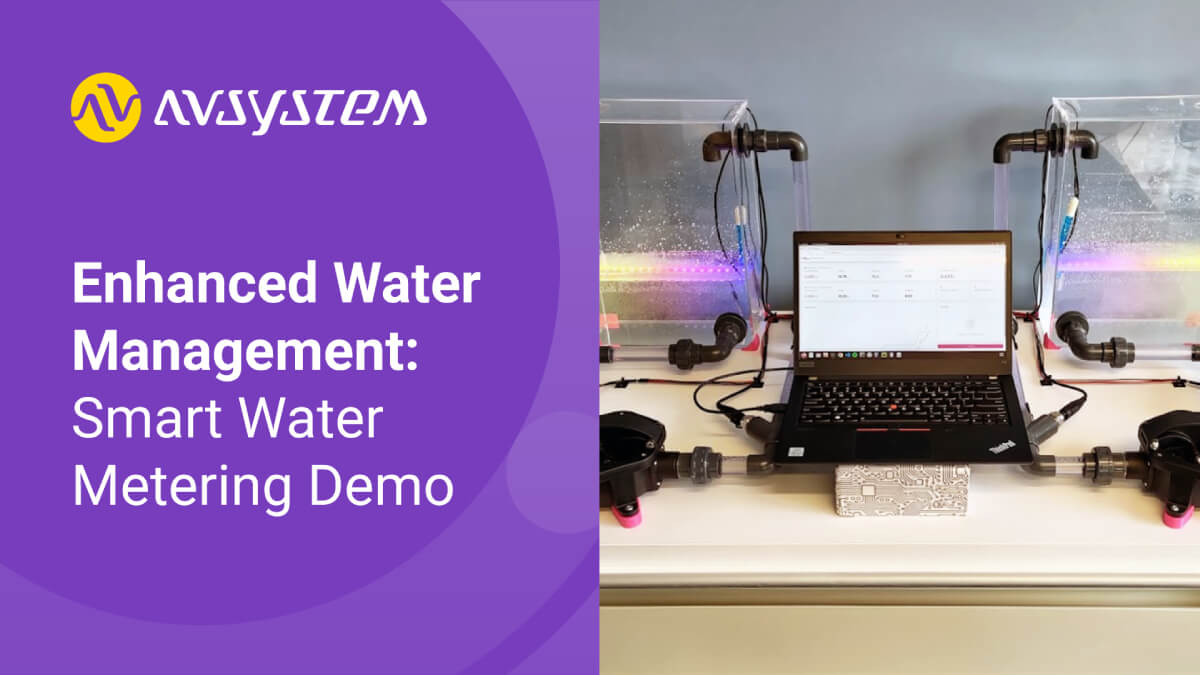How can you effectively tackle the challenges of IoT development?

From smart metering for remote monitoring to sensors that optimize supply chains, the Internet of Things (IoT) has seamlessly integrated into our lives, promising a hyper-connected future. Yet, developing these IoT solutions is a tough task, often taking considerable time and resources. Despite the many advantages offered by IoT, these projects face many hurdles, namely IoT security, long project development times, high costs, and the technicalities of combating power-hunger IoT devices.
These IoT development challenges are not just technical hurdles; they are pivotal in determining the success and reliability of IoT solutions. For example, effective IoT device management is crucial for maintaining the functionality and efficiency of interconnected devices, while IoT security is paramount in protecting sensitive data and ensuring user trust.
And crucially, overcoming these challenges is vital for businesses to reap the full benefits of IoT. With this in mind, let's dive into the most pressing IoT development challenges today and how we can overcome them.
.png)
Common Challenges in Future-Proof IoT Development
Complex IoT Solution Architecture
IoT architecture is inherently complex, often involving multiple layers of technology. Integrating various components such as sensors, connectivity modules (Wi-Fi, Bluetooth), data processing (algorithms, software), user interface (apps, dashboards), and cloud platforms into a cohesive system poses significant challenges. Moreover, diverse IoT devices within a system might be using MQTT, CoAP, and HTTP for communication while leveraging RESTful APIs for interoperability. While this works, it requires careful collaboration with various stakeholders like device manufacturers and software vendors to manage compatibility challenges. In other words, it can be a headache when managed poorly.
Overlooked Security
A critical challenge in IoT development is the tendency to overlook security, instead focusing entirely on functionality. This oversight can lead to releasing vulnerable solutions, making the IoT solutions susceptible to data breaches and cyber attacks.
For example, OTA updates on IoT devices often lack security due to insufficient encryption, authentication, and prioritization of convenience over robust protection. Manufacturers frequently use weak credentials and struggle with implementing strong security measures, exacerbated by limited computational resources on IoT devices. The fragmented nature of the IoT ecosystem further complicates the enforcement of standardized security practices, leaving vulnerabilities in the update process susceptible to interception and tampering.
The biggest concern is the management of device credentials, which are often weak passwords (sometimes even shared across multiple devices) that are also not securely stored on devices. These practices may lead to very serious consequences including insecure or even unauthorized OTA updates that may lead to very serious business implications.
To address such issues, governments are actively working on legislative solutions like the EU Cyber Resilience Act or California’s SB-327, which aim to make security features mandatory. Finally, the problem is also recognized by IoT technological companies like ARM which have created the Platform Security Architecture (PSA) framework for making sure that your device meets security standards. To further simplify and reduce the costs of the security process for IoT solution providers, chipset vendors like Nordic Semiconductor make PSA certification processes mandatory for their most popular chipsets.
Poor Focus on Scalability and Performance
IoT systems frequently struggle with scalability and maintaining performance as the number of connected devices grows.
It's a common pitfall where PoC solutions, although initially validated positively, lack the foresight needed for seamless expansion. More often than not, these successful PoCs must undergo a complete redesign from the ground up to achieve scalability.
And it can have real consequences. For example, the main reason for failed EV charging sessions is the inability of charging stations to connect properly. More than half (55%) of all charging failures in the US occur because the stations can't connect to their cellular networks for authentication. This leads also to higher costs of maintenance and a poor customer experience. The question then arises: What if such a solution were designed properly from the start?
Complex and Costly Data Management
Managing the massive volumes of data generated by IoT devices is a daunting challenge. The complexity lies in effectively storing, processing, and analyzing this data, often requiring expensive and sophisticated data management solutions.
Inadequate and Inefficient IoT Device Management
Effective IoT device management is often lacking in IoT ecosystems. This includes insufficient protocols and systems for comprehensive device management tasks such as device registration, firmware updates, and resource management, which are crucial for maintaining the health and functionality of IoT devices. In industrial and manufacturing contexts this can mean costly downtime.
Moreover, IoT device management is often developed in-house, as a necessary evil. As such it can easily become inefficient or outdated, hindering effective management of the device lifecycle, including onboarding, provisioning, configuration, and decommissioning. This inefficiency can lead to increased operational costs and reduced system reliability.
Limited IoT Device Monitoring
Another key challenge is the limited scope of IoT device monitoring. Many systems cannot adequately monitor aspects like device status, health, performance, and energy consumption. Without effective IoT device monitoring, issues such as system anomalies, security breaches, and performance degradation may go unnoticed.
Why Do These Challenges Exist?
- Cost Concerns: Companies, especially smaller ones, often prioritize minimizing initial development costs, leading to insufficient investment in long-term management and scalability. This approach can compromise the sustainability of IoT systems.
- Lack of Awareness: Organizations commonly underestimate the complexities of managing numerous IoT devices, resulting in poor planning. This lack of foresight often becomes apparent post-deployment, necessitating costly fixes.
- Focus on Short-Term Goals: To meet market demands swiftly, companies may focus on rapidly delivering functional IoT products, sidelining crucial long-term aspects like scalable data management and device lifecycle management.
- Lack of Interoperability and Scalability: In the face of rapid technological changes and diverse IoT standards, systems are frequently designed without interoperability and scalability in mind. This lack of standardization and foresight in early design stages hinders seamless integration and adaptability as the network expands.
- Lack of interdisciplinary approach to building IoT solutions: Managing the complex orchestra of technology requires a multidisciplinary approach, where mechanical and electrical engineers join forces with IT experts. Professionals, deeply entrenched in their specific domains, often struggle to effectively communicate and collaborate due to differing terminologies and perspectives. This further leads to problems with building simple and reliable solutions, as very often engineers need to work on aspects that are beyond their core competencies.
Future-Proof IoT Development Solutions
Now let's look at some forward-thinking strategies for combating IoT development challenges, discussed between experts from AVSystem and IRNAS, a company providing IoT development services.
Embrace Open Standards
In the realm of IoT projects, navigating tight budgets is of paramount importance. Optimize your resources by prioritizing open communication standards over custom protocols. Rather than investing in bespoke solutions for communication, leverage the cost-effective benefits of standards like LwM2M. This proven choice not only aligns with diverse project requirements but also streamlines the development process. The selected LwM2M platform, equipped with robust telemetry data collection and device management interfaces, simplifies customer-facing application design.
Implementing standardized and proven protocols like LwM2M offers many benefits for IoT development. The LwM2M data model standardizes object and resource definitions, enabling uniform data representation and streamlined communication between IoT devices. The result? Simplified integration, telemetry data federation, and enhanced interoperability in IoT ecosystems. With the advent of the AI revolution, the maintenance costs of existing machine learning datasets are already very high, thus data federation is of crucial importance to keep those costs under control.
Moreover, LwM2M offers efficient data collection, pre-processing, and management, a cornerstone for any robust IoT system, and ensures robust IoT security, protecting against potential data breaches and unauthorized access. Perhaps most importantly, it addresses scalability and performance issues, supporting the growth of IoT networks while maintaining system efficiency and reliability.
Leverage Pre-Built Integrations and Ready Solutions to Reduce Time to Market
Leveraging pre-built integrations and ready solutions can simplify IoT development by reducing the need for custom coding and ensuring compatibility and reliability, thereby speeding up deployment and reducing development complexities.
A plethora of open-source solutions is available to support developers in overcoming these challenges. Notable among them are:
- Anjay IoT SDK: Anjay excels in simplifying IoT development by leveraging the LwM2M protocol. Standardizing security and data formats, Anjay promotes efficient communication and compatibility with various hardware platforms. It facilitates seamless connectivity with devices from industry leaders like Nordic Semiconductor, Espressif, and STMicroelectronics. Anjay further supports connections with cloud and data visualization services via the Coiote IoT platform, offering direct integration with tools, analytics platforms, and applications via Kafka, Webhooks, or REST API.
- Zephyr SDK: As an open-source real-time operating system designed for IoT, the Zephyr SDK provides developers with scalability, modularity, and real-time capabilities. With support for various hardware architectures and peripherals, it fosters efficient and customizable development. The Zephyr RTOS, at its core, works with over 500 boards and continues to grow with each community-driven release. The active community and robust security features make Zephyr SDK an appealing and versatile solution for a wide range of IoT devices. It is worth mentioning that Nordic Semiconductor’s nRF Connect SDK also uses the Zephyr RTOS. This integration expands Zephyr's reach, enhancing its appeal and functionality in the IoT development landscape.
- Anjay Zephyr Client: Combining the strengths of LwM2M and Zephyr RTOS, the Anjay Zephyr Client emerges as a powerful solution for seamless IoT development. It streamlines communication, enhances security, and promotes collaborative innovation, making it an ideal choice for developers seeking a comprehensive solution.
In the realm of IoT solutions, a holistic approach involving also the cloud perspective is crucial. Consider utilizing end-to-end features of the infrastructure, including support for multi-component FOTA for seamless device updates over the air, integration of location services for tracking functionalities, and diverse cloud integration options enabling swift data flow to the destination.
By incorporating these ready-made features into your IoT development process, you not only accelerate your time to market but also save valuable resources, both in terms of time and money. From initial prototyping to scalable deployment, these pre-built integrations and solutions alleviate the challenges, allowing developers to focus on innovation and efficiency.
Future-Proof Your IoT Projects
A forward-looking approach is crucial for sustainable IoT development. To achieve this, it is essential to employ strategies such as steering clear of vendor lock-in right from the beginning. This proactive measure not only ensures flexibility and adaptability for upcoming technological advancements but also mitigates potential challenges related to pricing and data migration in the future. By avoiding vendor lock-in, you retain full control over the trajectory of your connected IoT devices, safeguarding against unforeseen obstacles.
Additionally, effective device lifecycle management and solution scalability, are an integral part of any comprehensive IoT platform, ensuring sustainable and cost-effective device usage. This approach includes careful consideration of device deployment, maintenance, and eventual decommissioning or repurposing, thereby extending the utility and lifespan of IoT devices.
With well-proven systems like AVSystem's IoT Device Management Platform you can expect cloud infrastructure capable of handling multiple hundreds of thousands of devices and its data are challenging to build and maintain.
Seek Professional Support and Resource Optimization
IoT experts, like IRNAS, and other industry consultants can provide valuable insights into the complexities of IoT development, including the nuances of various IoT communication protocols and platforms. Their guidance can help navigate the intricate process of developing, deploying, and maintaining sophisticated IoT systems, ensuring that they are not only functional but also cost-efficient, scalable, and secure.
Final Thoughts
As we navigate the complexities of IoT development, from intricate architectures to essential security and management, the path forward is clear. By embracing standard protocols, leveraging ready solutions, and seeking expert guidance, we pave the way for a more connected, efficient, and innovative future.
Recommended posts
- IoT communication protocols explained [with measurements for NB-IoT]
- How to Streamline Data Handling with LwM2M Solutions?
- Enhanced Water Management: Smart Water Metering Demo
Subscribe to stay in the loop with all our latest content:
Recommended posts

![IoT communication protocols [with measurements for NB-IoT]](/media/avssite/news/Communication-Protocols-Comparison_cover_new.png)

